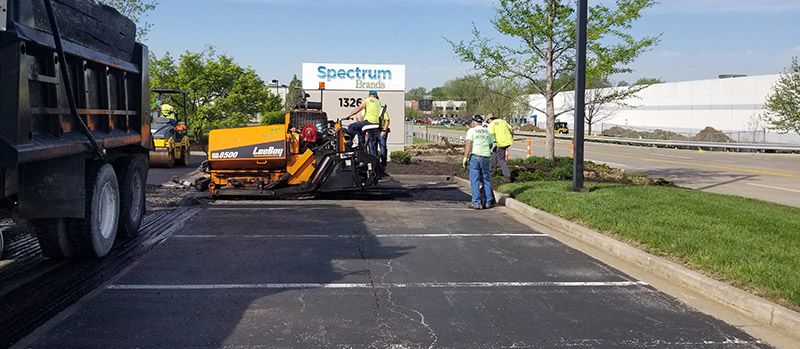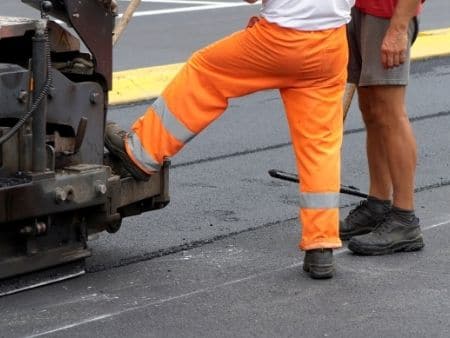The A1 Professional Asphalt & Sealing Llc Ideas
The A1 Professional Asphalt & Sealing Llc Ideas
Blog Article
How A1 Professional Asphalt & Sealing Llc can Save You Time, Stress, and Money.
Table of ContentsA1 Professional Asphalt & Sealing Llc Fundamentals ExplainedAn Unbiased View of A1 Professional Asphalt & Sealing Llc5 Easy Facts About A1 Professional Asphalt & Sealing Llc ExplainedThe Main Principles Of A1 Professional Asphalt & Sealing Llc How A1 Professional Asphalt & Sealing Llc can Save You Time, Stress, and Money.

The oil in a car engine is not simply oil. It contains a variety of ingredients to improve the lorry's performance. These consist of polymers, viscosity modifiers, heat stabilizers, added lubes, and put on additives. The REOB includes all the additives that were in the waste oil in addition to the wear steels from the engine (primarily iron and copper).
By making several blends using different REOB samples and various asphalt binders, the variants mainly can be balanced out. Numerous States supplied examples of known REOB structure to TFHRC researchers, who assessed the samples to compare the percent of added (recognized) REOB to the found (checked) amount. The evaluations revealed a comparable percent of included and found REOB.
A1 Professional Asphalt & Sealing Llc - An Overview
None of those States realized that the asphalt they were getting included REOB. One State insisted its examples had no REOB - https://www.mixcloud.com/a1aspha1tseal/.
Of the 1,532 samples tested, 12 percent contained REOB, and some had substantially high levels of it at 1020 percent. The highest degree was 34 percent in a sample from Texas, which TxDOT had used in a patching compound. This screening also disclosed the existence of phosphoric acid in 11 percent of the examples, and 2 percent contained ground tire rubber.
2 years ago at TRB's annual meeting, the Federal scientists held an REOB workshop and offered the searchings for of their laboratory examinations to a standing room-only crowd. Although some companies do not especially outlaw REOB, they do impose physical tests that avert its useeffectively a ban. asphalt repairs. Others do not ban it by specification, but have contracts with asphalt vendors to stay clear of using REOB
What Does A1 Professional Asphalt & Sealing Llc Do?
Ohio and Texas restriction levels to much less than 5 percent of the asphalt. To establish a trusted test approach that all States can use, the TFHRC scientists set up a round-robin test plan.
In total amount, the scientists prepared and delivered 720 blends. The participants are testing the examples independently using the standards supplied by the TFHRC scientists. The round-robin testing is virtually finished, and TFHRC remains in the process of collecting the results. The outcome will certainly be a suggested AASHTO examination approach that any type of State can adopt and utilize (a1 asphalt).
The pavement with REOB, which is situated 0.6 mile (1 kilometer) from the sidewalk without REOB, has similar subgrade, web traffic density, and environment. However, the segment of Highway655 with 5 to 10 percent REOB revealed considerable fracturing. In this example, the presence of REOB was the recognized reason for breaking at a low temperature levels.
"In our experience in Canada, even small quantities of 23 percent can be a trouble." An area of examination sidewalk in Minnesota (MN1-4) discovered to contain REOB additionally fractured prematurely. The sidewalk performed well for the initial 3 to 4 years, yet after that began to break. This sidewalk is also based on low temperature levels.
The 9-Minute Rule for A1 Professional Asphalt & Sealing Llc
The tests were not comprehensive, however they revealed that at levels of 6 percent or even more, the tensile toughness continue reading this of the asphalt went down dramatically. At a level of 3.5 percent REOB, the variation in the physical test approaches was higher than the impact of REOB. As a matter of fact, it was difficult for scientists to examine whether REOB was present.

One binder specification considered is the distinction in between the low temperature vital requirements temperature for rigidity (S) in the bending beam rheometer and the flexing beam of light rheometer creep incline (m-value) noted as Tcritical. 2 independent study teams, one from AASHTO and the other from the Asphalt Institute, concluded that even more study is required on the usage of REOB in asphalt.
Previously, all asphalt testing measured engineering residential properties such as rigidity. These tests do disappoint what materials had been included in the asphalt. One example obtained throughout the TFHRC research had a really odd analysis. The example had the complying with examination outcomes: Superpave PG 64-28 with a heat quality of 67.3 Tcritical on the flexing light beam rheometer was 6.7 degrees Celsius.

The Facts About A1 Professional Asphalt & Sealing Llc Revealed
These outcomes show there are weak points in the standard design screening procedures that may be manipulated. The producer might have an economic benefit and the item passes all the standardized examinations, but the item might not be useful to making sure long-term performance. To address this problem and the expansion of new asphalt ingredients and extenders, TFHRC is beginning a research program to use handheld spectroscopic tools, x-ray fluorescence spectroscopy, and Fourier change infrared spectroscopy to enable evaluations to be done in the field instead of needing to take examples back to the laboratory.
Report this page